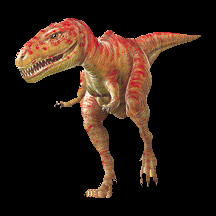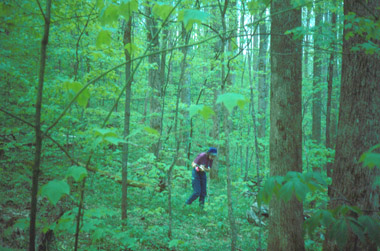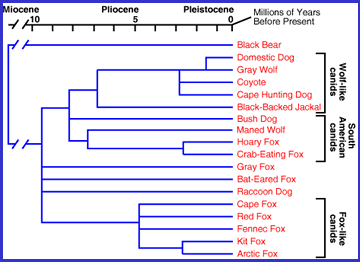
Courtesy of Goldenbooks.com
Did T-rex have a plant-eating relative?
News story originally written on October 4, 2002
It looks like the theropod dinosaur family, which included monstrous meat-eaters like Tyrannasaurus rex and raptors, contained a plant-eating dinosaur as well! Scientists have found clear evidence that a newly discovered species of theropod dinosaur ate plants. The name of the new species of dinosaur, discovered in Chinese rocks, is Incisivosaurus (referring to its large front teeth called incisors) and it was probably the most ancient oviraptor.
The evidence that Incisivosaurus ate plants comes from its teeth. While other theropod dinosaurs had sharp dagger-like teeth for ripping through meat, Incisivosaurus had large front teeth and an overbite, like hamsters do today. Large areas of the dinosaurís teeth have been worn down which indicates that the upper and lower teeth made contact as the animal chewed, just like teeth do for plant eating animals today. Also, Incisivosaurusí teeth donít have jagged serrations like those on the pointed teeth of its meat-eating relatives.
This new species of dinosaur was discovered in sediments that were laid down 129 million years ago in an area that is now northeast China. Other fossils found in the surrounding sediments indicate that the dinosaur lived in a forest environment filled with conifer trees and shrubs.
Incisivosaurusí plant-eating way of life was unusual for a theropod dinosaur, but the same pattern does happen today as well. For instance, pandas, which eat bamboo instead of meat, are related to carnivorous mammals, which eat only meat. This happens when there is a food source that no one is eating and over thousands of years a species tooth structure changes or evolves so that it is better equipped to eat that food. This makes the species less like its relatives, but better able to survive it its environment.














